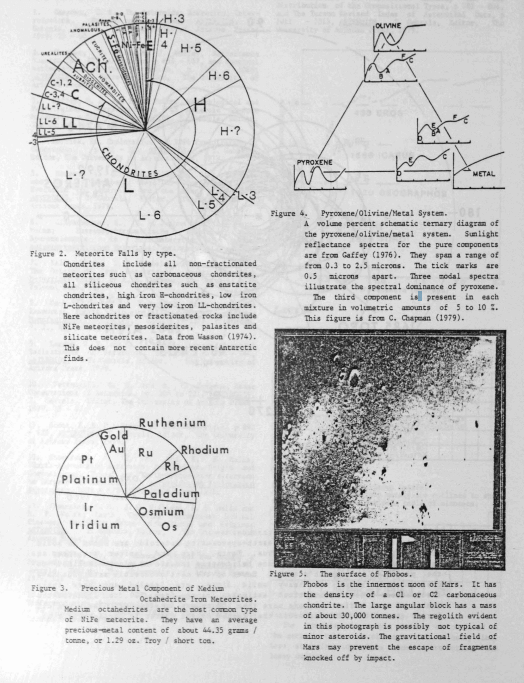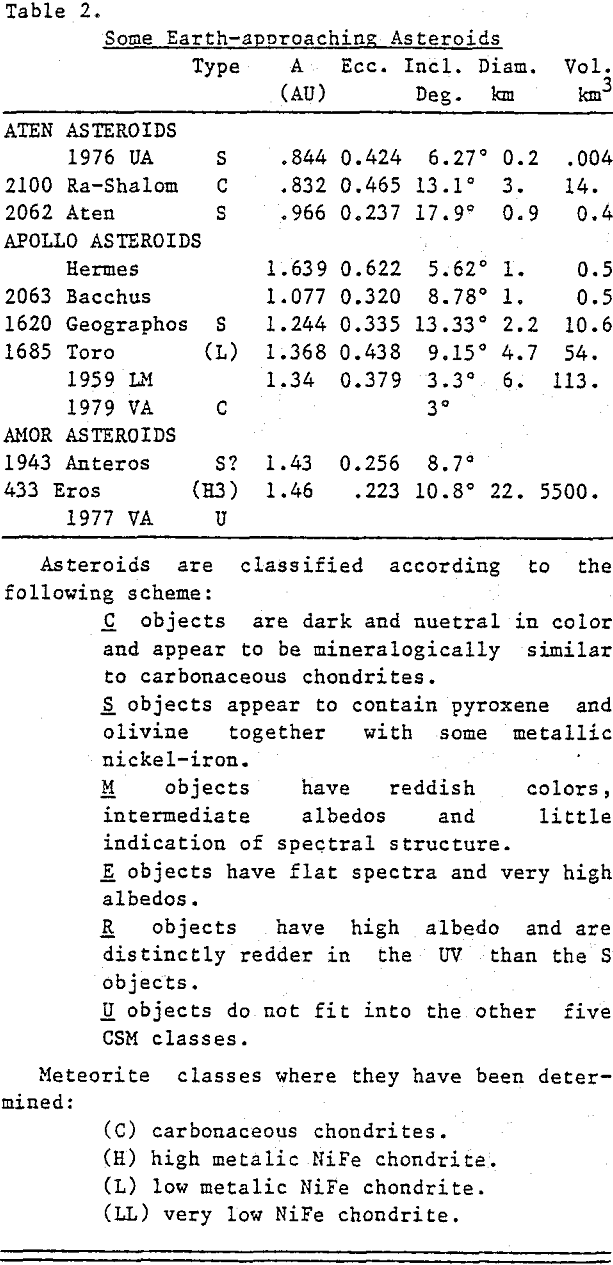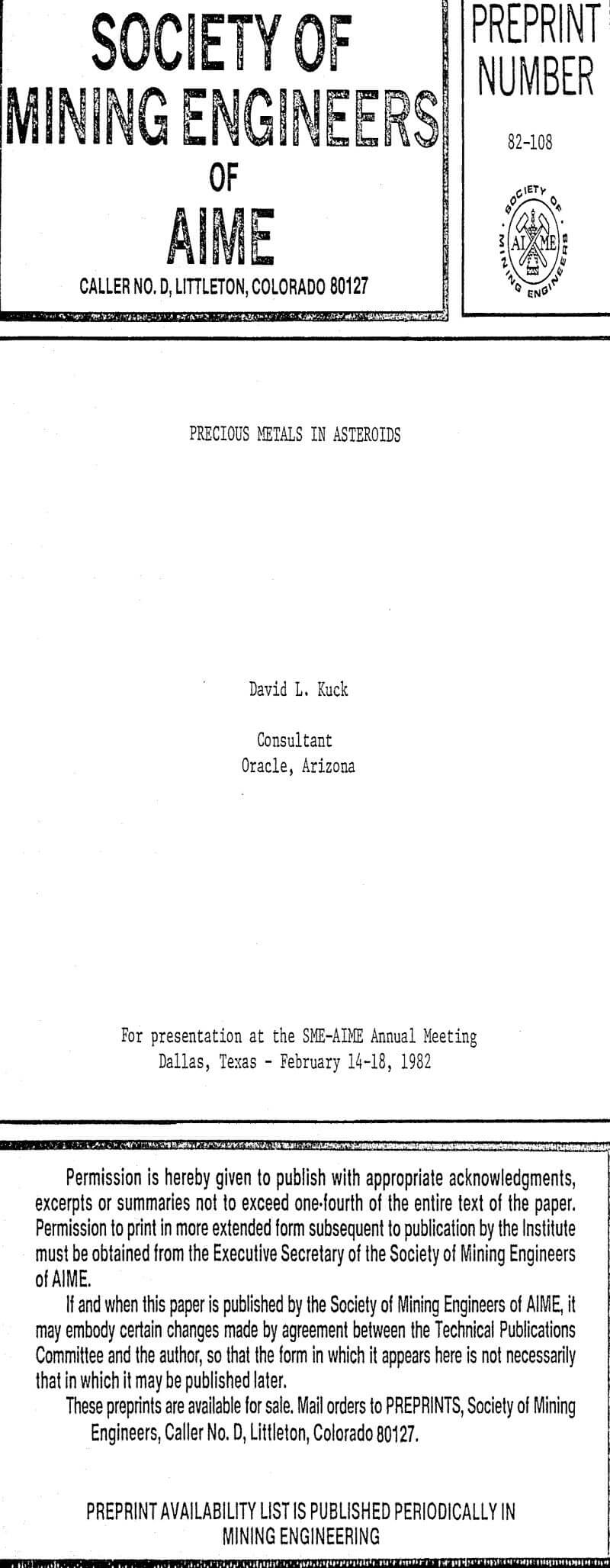
Surely in the future the mankind will exploit the mineral resources of the Moon and other planets of our Solar System but, you know, to ensure the success of a mineral exploitation and exploration must be made before.
So, there is a question: the mineral deposits of, say, the Moon, have been already explored?
The deposits have been delineated and sampled, the resources have been measured by means of extensive drilling, feasibility studies have been made as to have proved reserves?
There exists enough information as to give to a mining company the sufficient level of confidence to begin a profitable exploitation?
I repeat, surely the mankind will exploit the mineral resources outside our planet, but I think it will occur on a far future… Without exploration, without the job of field geologists the mining operations are a nonsense, very risky and usually leading to the huge economic losses.
Today the idea of mining in space belongs to science fiction, but again, it will be possible in a far future.
Most of the more than 2,000 known asteroids are in elliptical heliocentric orbits with perihelions outside the orbit of Mars and aphelions inside the orbit of Jupiter. The 22 named Trojan asteroids are in orbit around the (L-4 and L-5) Lagrangian points in Jupiter’s orbit 60° ahead and behind the planet. There are also a few asteroids hown beyond the orbit of Jupiter. The asteroids of most immediate interest are about fifty tiny bodies (0.5 to 23 km diameter) that approach the Earth. The earth-approaching asteroids are in orbits that allow them to pass near 1 AU. They are grouped in three classes based on the relation of their orbit’s semi-major axis to that of the earth’s. Exec known classes of earth-approaching asteroids are: Aten asteroids with semi-major axis less than 1.0 AU, Apollo asteroids with semi-major axis equal to or greater than 1.0 AU, and Amor asteroids with perihelia between 1.0 AU and 1.3 AU. Shoemaker et al. (1979) estimate the total population of earth approaching asteroids with visual magnitudes greater than 18 to be about 1300, of which 8 % are Xtend, 50 % are ~~0110s and 40 % are Amors. The only physical samples of extraterrestrial materials are the lunar samples and meteorites. Meteorites are a sampling of fragments of asteroids and comets. However, mtil asteroids are sampled directly, these are the best physical sample of asteroidal materials that we possess.
Meteorites are a biased sampling of fragments of asteroids and comets. One of the biases is relative resistance to fragmentation during atmospheric entry. An overriding bias is the time and place of fragmentation of a parent body. Another is the varying degree of resistance to weathering once meteorites have impacted the earth.
- Gold Mining Equipment
- Best Metal Detectors for Gold
- Best Gifts for Rock Collectors
Meteorite Types:
Two broad general classes of meteorites are the chondrites and the achondrites. Chondrites represent relatively unfractionated bodies and possibly the crust of fractionated bodies. Achondrites, which include the irons, are the result of fractionation in relatively large bodies by melting and gravitational separation of mineral phases. Achondrites resemble terrestrial rocks more closely than do chondrites, except for the irons and stony-irons which are more closely related to the earth’s core and mantle.
Achondrites
The fractionated meteorites are represented by the nickel-iron meteorites, mesosiderites (pyroxene-plagioclase s tony-irons 1, pallasites (olivine stony-irons), siderophores (bronzite-tridymite stony-irons 1, lodranites (bronzite-olivine stony-irons 1, enstatite achondrites (aubrites) , hypersthene chondrites (diogenites) , olivine achondrites (chassignites), olivine-pigeonite achondrites (ureilites 1, augite achondrites (angrites) , diopside-olivine chondrites (nakhlites), pyroxène-plagioclase achondrites (eucrites and howardites). Of the achondrites, only the nickel-irons have significant quantities of precious metals. The stony achondrites tend to be devoid of native siderophile elements such as iron, cobalt, nickel, and platinum group metals. This is the result of the gravity concentration of metallic siderophile elements in the NiFe core of a planetary body by magmatic fractionation. Therefore the NiFe contains most of the precious metals. The relative precious metal content of medium octahedrite iron meteorites, which is characteristic of the iron fraction of mesosiderites and some E and H-type chondritic stony meteorites.
If you are interested in finding cool stuff on this planet, then be sure to check out our recently updated list of the best metal detectors for beginners and the best metal detectors for finding coins.
Be sure to bring a Rock Crusher to your moon mining camp. Chondrites represent 80 X of meteorite falls. See Figure 2. They are unfractionated to poorly fractionated aggregates of chondrules (spheroidal mineral aggregates) in a fine grained to amorphous groundmass. Chondrites are grouped according to the free metallic NiFe present, ranging from highest to lowest as follows: ens tatite (El, high iron (81, low iron (L), very low iron (IL) and carbonaceous (CV, CO, 0.1 and CI). statite chondrites are broken into several types as follows:
Types E3 and E4 (clinoenstatite), and Types E5 and E6 (orthoenstatite. A11 chondrites are subdivided on a scale of from 1 to 6 according to the degree of chondrite development. Type C1 carbonaceous chondrites have no chondrules while L6 chondrites are mostly well developed chondrules in a microcrystalline, grounds . Interesting chondritic asteroids are Gl and CV carbonaceous chondrites and ordinary chondrites with low,metal contents such as the L and LL chondrites. Nearly all chondrites contain almost equal values of precious metal. The metal fraction of the low metal content chondrites have a high precious metal content because the precious metals, being mainly siderophile, are contaminated with less NiFe. The metal fraction of the institutes has a 24 X chance of having more than 30 ppm iridium. The metal fraction of Types L, LL, CO and CV chondrites have the highest percentage of precious metals. In these meteorites the Ni-Fe fraction is mostly taenite, ranging from less than 1% to nearly 10% by weight. The Types L and LI. (hypersthene-olivine) chondrites, Types CO, CV carbonaceous and LL (olivine-pigeonite) chondrites and Types CO and CV carbonaceous chondrites contain taenite as the predominant metal fraction.

These tiny moons of biars, are relatively close and well known. Data available on these tiny asteroid like moons indicates that they are most probably C1 or C2 carbonaceous chondrites. The regolith of Phobos and Deimos may be as homogenized as the regolith of Earth’s moon, with the precious metals dispersed as tiny grains. The precious platinum group metals, along with reduced iron and meteoritic nickel-iron particles, might be recovered from the regolith of Phobos or Deimos by magnetic or electrostatic separation. The resulting iron – precious-metal concentrate might be separated into a structural iron and a valuable precious metal residue by magnetic andlor chemical separation. Due to the extremely fine micron and submicron sizes of these precious metal alloy grains, liberation and concentration may prove difficult.
Metallic Asteroids
Of the metallic asteroids, the class IV-B nickel-rich ataxite (taenite) and those class 11-A hexahedrites (kamacite) irons with more than 15 ppm iridium have the highest precious metals content. Base precious metals are high unit value commodities, but only about 12 X of the metallic asteroids can be expected to contain such significant amounts.
Earth-Approaching Asteroids
The earth-approaching asteroids, otherwise horn as the Apollo-Amor-Aten bodies, are a group of tiny near-earth asteroids, approximately fifty are shown. Most of the orbits of the hown earth-approaching asteroids (except for some of the Amers) in relation to the orbits of Jupiter and the inner planets. Heavy lines indicate some of these earth-approaching asteroids which have orbits with low eccentricities andlor low inclinations to the earth’s orbit. The earth-approaching asteroids are known bodies from which promising exploration targets might be selected, because their orbits allow interception from low-earth orbit with the least change in relative velocity. Many different kinds of bodies appear to be represented among the earth-approaching asteroids. They are predominantly S-type with some C-type asteroids. bong the Earth-approaching asteroids, to date, metallic bodies are notably absent.
Earth-Crossing-Asteroids
Aten and Apollo asteroids are those with orbits that have perihelions of less than 1.013 Au. They often have high eccentricities and inclinations which greatly increase the delta-V necessary to reach than from earth orbit.
Aten Asteroids
These asteroids have orbits with semimajor axes less than 1.013 AU. Atens come near the earth’s orbit and do not cross the orbit of Mars.
Economically valuable and strategically important platinum-group metals are available in the Earth Approaching asteroids. To visit some of these asteroids will require less energy for a round trip from low earth orbit than for a round trip to the surface of the Moon. The quantity of platinum-group metals available in the Aten, Apollo and Amor asteroids far exceeds all known terrestrial reserves of these metals. An intensified telescopic search for these bodies should be started in order to increase the quantity and quality of available exploration and exploitation targets.
Precious Metals in Asteroids
Most of the more than 2,000 known asteroids are in eliptical heliocentric orbits with perihelions outside the orbit of Mars and aphelions inside the orbit of Jupiter. The 22 named Trojan asteroids are in orbit around the (L-4 and L-5) Lagrangian points in Jupiters orbit 60° ahead and behind the planet. There are also a few asteroids known beyond the orbit of Jupiter. The asteroids of most immediate interest are about fifty tiny bodies (0.5 to 23 km diameter) that approach the Earth.
Meteorites are a biased sampling of fragments of asteroids and comets. One of the biases is relative resistance to fragmentation during atmospheric entry. An overriding bias is the time and place of fragmentation of a parent body. Another is the varying degree of resistance to weathering once meteorites have impacted the earth.
Telescopic Classification of Asteroids
Most asteriods are composed of the same suites of minerals as are many distinct- meteorite types, including silicate-rich assemblages, metal-rich assemblages, and carbonaceous assemblages. Ordinary chondritic spectra were found on Earth-approaching asteroids 433 Bias-corrected data led to the recognition of the predominance of C-type asteroids in the main belt and decreasing proportion of S-type asteroids with semimajor axis. In other words, the Earth-approaching asteroids tend to be S-type, and the inner part of the main belt are more stony than the outer parts of the main belt which tend to be mainly C-type asteroids.
Mineralogy and Petrology
Transition elements (Ti, V, Cr, Mn, Fe, Co, Ni and Cu) and cations (Fe++ and Ti+++) have an outer (valance) unfilled d-shell of electrons. Such a cation, surrounded by anions in a crystallographic site, has outer electron orbitals with strong repulsions that can be split to higher energy shells. Electrons undergoing the smallest electronic repulsion become groundstate electrons. The energy difference between the groundstate and excited electrons is the crystal field splitting energy. A photon whose energy equals the splitting energy of a cation can be absorbed.
Ultraviolet and Vacuum Ultraviolet Spectra
The reflectance spectrum contribution of a mineral phase in a mixture is a function of the wavelength-dependent optical properties and of the optical density at that wavelength. The mineral with the greatest optical density tends to dominate. Comparison of the spectra of olivine, pyroxene and an olivine-pyroxene mixture demonstrate this. See Figures 4, 6a, 6c and 6b. Two narrow symmetric absorption features centered at 0.9 microns and 1.9 microns characterize the pyroxene absorption curve. The olivine spectrum has a broad asymmetric depression centered about 1.0 microns.
C1-type carbonaceous chondrites contain primarily iron-rich clay minerals of layer silicates. Accessory minerals by weight percent are magnetite (5-15 %), soluble magnesium salts (5-15 %), water (10 %) and carbon as graphite and hydrocarbons (2-5%).
CO3-type carbonaceous chondrites contain olivines (Fa11-34) in an olivine (Fa50) matrix. Accessory minerals are low calcium clinopyroxene (Fs5) and magnetite. The matrix contains most of the volatile phases, water (0.1-1.4 %) and carbon (0.2-0.6 %).
Correlation of meteorite types to specific asteroids is only fair to poor. To date there is no direct sample of an asteroid as there is for the moon, nor has a space probe landed on an asteroid. Most asteroids in the main belts between Mars and Jupiter appear to be types of carbonaceous chondrites.
Asteroids
The precious platinum-group metals, along with reduced iron and meteoritic nickel-iron particles, might be recovered from the regolith of Phobos or Deimos by magnetic or electrostatic separation. The resulting iron – precious-metal concentrate might be separated into a structural iron and a valuable precious metal residue by magnetic and/or chemical separation. Due to the extremely fine micron and submicron sizes of these precious metal alloy grains, liberation and concentration may prove difficult.
The earth-approaching asteroids, otherwise known as the Apollo-Amor-Aten bodies, are a group of tiny near-earth asteroids, approximately fifty are known. Figure 1 shows most of the orbits of the known earth-approaching asteroids (except for some of the Amors) in relation to the orbits of Jupiter and the inner planets. Heavy lines indicate some of these earth-approaching asteroids which have orbits with low eccentricities and/or low inclinations to the earth’s orbit.
Economically valuable and strategically important platinum-group metals are available in the Earth-approaching asteroids. To visit some of these asteroids will require less energy for a round trip from low earth orbit than for a round trip to the surface of the Moon. The quantity of platinum-group metals available in the Aten, Apollo and Amor asteroids far exceeds all known terrestrial reserves of these metals. An intensified telescopic search for these bodies should be started in order to increase the quantity and quality of available exploration and exploitation targets.
Related: Best Bench Vises



